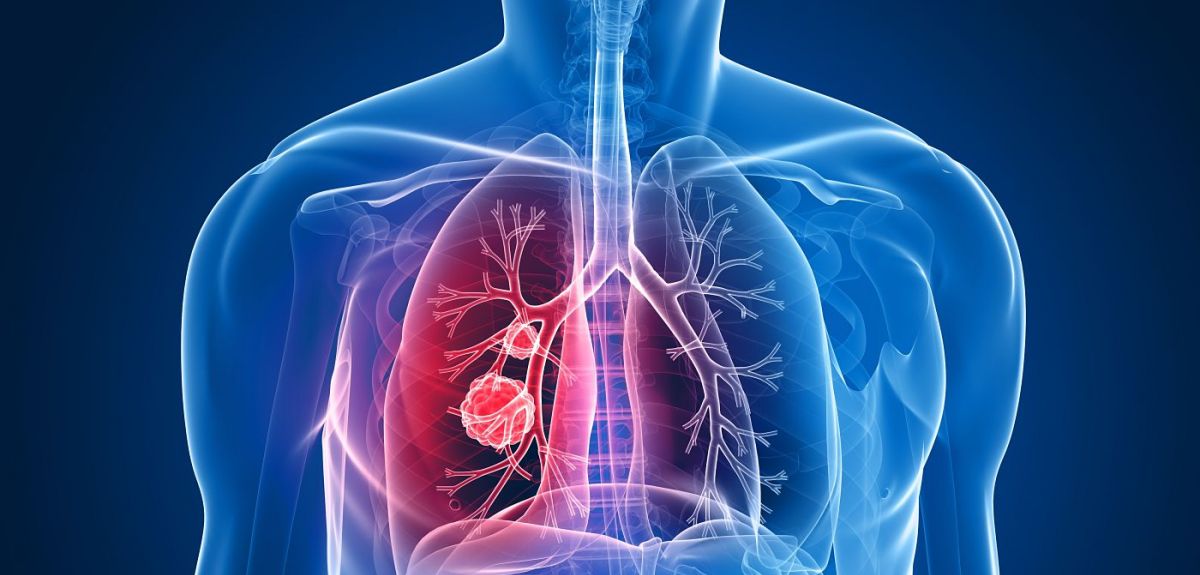
Genetic expression 'predicts lung cancer survival'
A study led by Oxford University researchers and colleagues at the National Cancer Institute, Milan, Italy has shed light on a key puzzle thrown up in some lung cancer screening programmes.
Italian researchers have screened more than 5000 heavy smokers over the last fifteen years, using CT scans to detect lung cancer early. While the proactive CT screening of smokers has been good at discovering developing cancer tumours, finding them more frequently than expected, the programmes have not had a clear effect on reducing deaths from cancer. The research team decided to look at whether the way different genes were expressed in various tumours could account for why some people survived and others did not, despite the early detection by the screening program.
Lead researcher Dr Jiangting Hu said: 'If you are doing well at finding tumours, you would expect to be reducing deaths by treating people earlier. But there was no clear link between this early detection and survival rates. We hypothesised that the screening programmes were mostly finding indolent – slow-growing – tumours. These indolent tumours were removed, but there were also aggressive, fast-growing, tumours developing. These fast-growing tumours do get found by screening but later as they develop and, even if detected very early, already have a very aggressive phenotype.'
The researchers looked at the gene expression pattern of tumours that had been detected by CT scans and compared the differences between the pattern detected at baseline and the pattern detected later on. Different expression of some genes can lead similar tumours to behave in different ways. The genetic expression in the tumours was compared with other information about the cancer cases.
The team found 239 genes whose expression was related to cancer survival rates.
Professor of Tumour Pathology Francesco Pezzella said: 'The striking thing was that the 239-gene signature divided the patients into two groups that clearly predicted disease-free survival and also divided the indolent tumours detected at baseline from the tumours which were found later on during the screening program, regardless of tumour stage or size, and any histopathology findings from studying the tissue. We also found that the genetic expression in healthy cells differed between those two groups of people. Furthermore the same signature could divide indolent from very aggressive tumours in patients as part of normal clinical practice.
'The results confirmed that there is a difference between indolent and aggressive tumours, which could be used to identify those with more dangerous tumours for personalised care. They also show that we could profile healthy tissue to identify high and low risk groups. A final remarkable finding is that the team led by Ugo Pastorino and Gabriella Sozzi in italy has discovered that the same genetic differences can be seen with a blood test in the same patients.
'The next step will be finding shorter gene signatures, enabling us to develop more personalised diagnosis to facilitate better targeted cancer treatment.'
The paper, Gene signatures stratify computed tomography screening detected lung cancer in high-risk populations, is published in EBioMedicine: http://www.sciencedirect.com/science/article/pii/S235239641530058X (doi:10.1016/j.ebiom.2015.07.001).
 Professor Sibel Erduran joins prestigious Academy of Social Sciences Fellowship
Professor Sibel Erduran joins prestigious Academy of Social Sciences Fellowship
 Oxford unmasks the fraudsters behind the forgeries for April Fakes Day 2025
Oxford unmasks the fraudsters behind the forgeries for April Fakes Day 2025
 Expert Comment: Can Europe hold the line of liberal democracies?
Expert Comment: Can Europe hold the line of liberal democracies?
 Oxford launches first human aerosol TB challenge trial
Oxford launches first human aerosol TB challenge trial